What are prebiotics? They are food for beneficial bacteria and more powerful in supporting your biome than probiotics (which are the actual bacteria).
You can take all the probiotics you want, but feeding your beneficial bacteria with the right plant fibers, is what makes them grow.
A thriving, balanced biome is your ticket to good immune and digestive health. Those good bugs are natural protectors against invading microbes and help manage inflammation.
How to consume prebiotics safely
Prebiotic fibers are found in fruits and veggies.
Don’t get so focused on killing pathogens in the gut, that you ignore supporting your greatest inner warriors. A strong biome will naturally combat yeast, parasites and bacterial overgrowth, so you don’t have to take as many antimicrobial herbs.
The problem with prebiotics is that not everyone can tolerate them. Some prebiotic fibers are considered high FODMAP, high insoluble fiber, or high starch and this can irritate a leaky, reactive or imbalanced gut (with microbial overgrowth).
People with SIBO (small intestinal bacterial overgrowth) need to be particularly careful supplementing with prebiotic fibers or eating prebiotic foods. But there are safe fibers for SIBO.
Adding a prebiotic fiber supplement during an antimicrobial protocol can help offset the damage/loss to the good bacteria.
During my mold detox, I was on anti-fungal herbs, liver support and binders to get rid of the mycotoxins and the candida growth that came with it.
To offset the effects of the antimicrobial/antifungal herbs I added prebiotic powders and polyphenols to my breakfast porridge.
It is always a good idea to start slow with fiber if you’re not used to it. It can cause bloating and/or gas for some people.
Start with tiny amounts (1/4 to 1/2 teaspoon) and build up slowly based on tolerance.
Below are a list of the different prebiotic fibers to choose from.
I’ll show you how I build my prebiotic breakfast bowl.
Different types of prebiotics
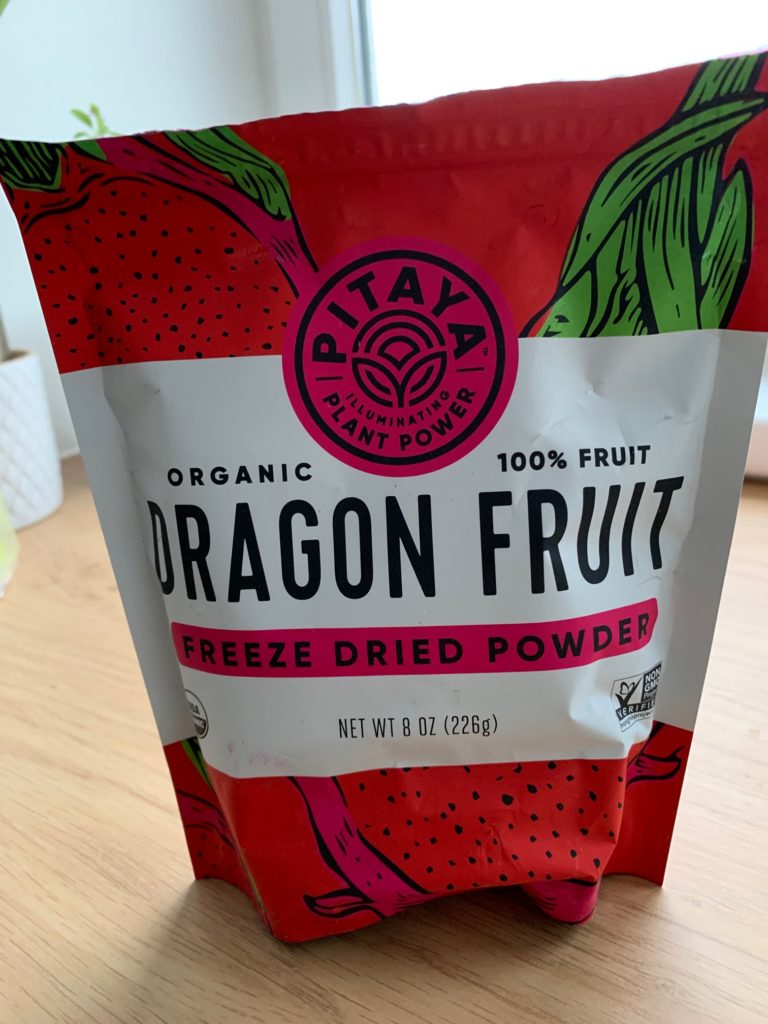
Polyphenols: Polyphenols are not technically prebiotics but I included them here because they also help feed beneficial bacteria. Three red polyphenols feed a key bacterial strain called Akkermansia, which is a “mother strain” that supports and feeds other beneficial bacteria.
The red polyphenols shown to feed Akkermansia in studies are red dragon fruit, pomegranate and cranberries. Red dragon fruit is an exotic fruit but Amazon carries a delicious dragon fruit powder that works as well as it tastes.
Acacia fiber: Acacia fiber is also called acacia gum, and comes from the sap of a particular African tree. It is packed with soluble fiber (read about what this is below), which is also good for detox, healing wounds, good oral health and easing coughs and sore throats.
The benefits of acacia fiber is that it ferments slowly in the gut. This source of soluble fiber can help support healthy bowel movements without a lot of reaction. This is considered one of the safer fibers for IBS. But everyone is different so use caution.
Psyllium husk: Psyllium comes from a seed and has traditionally been used for constipation relief. It is also used in baking to add bulk.
Psyllium bonds with water and swells to ten times its volume and forms a sticky, sponge-like gel that absorb some toxins, sugars and carbohydrates as it moves down the gut.
Psyllium is mostly soluble fiber, which is easier to tolerate than insoluble fiber. But everyone reacts differently to psyllium so use with caution. Other benefits include balancing blood sugar and filling you up so you are not as hungry.
Flax flour and chia flour: Flax seeds and chia seeds both contain omega 3 fats, protein and good prebiotic fiber. Flax seeds contain more soluble fiber than chia seeds.
In my experience with clients, these cheap sources of prebiotics are hit and miss. Some people tolerate one or the other or both and some tolerate neither. That could be because both contain some insoluble fiber (read more about this below).
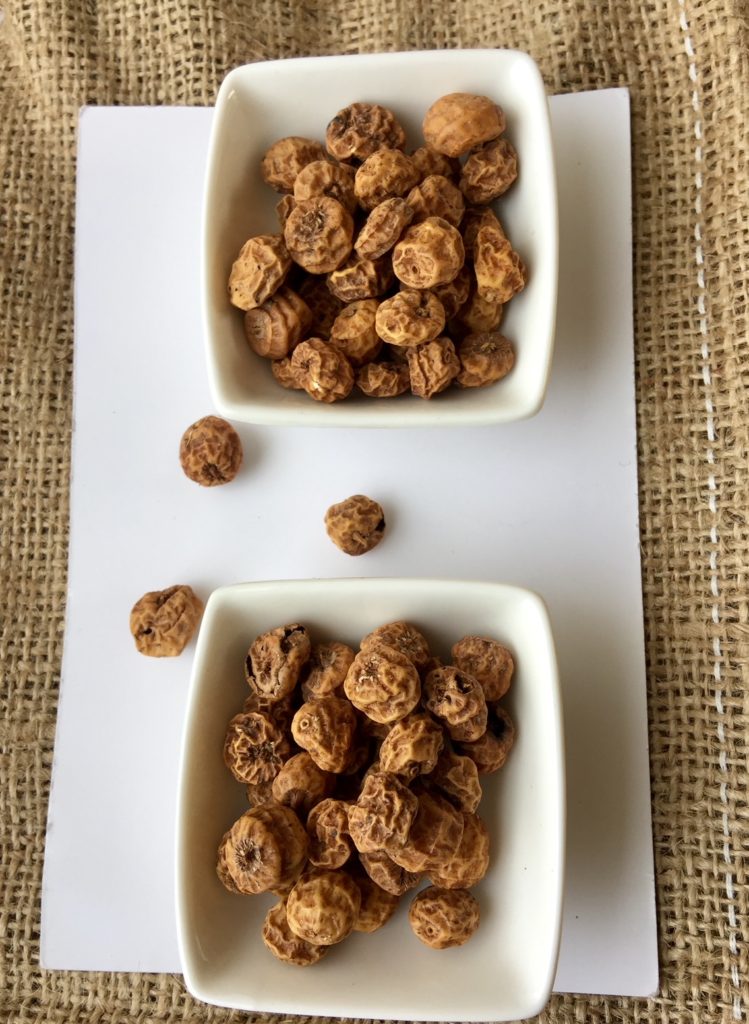
Tiger nuts (sibo safe prebiotic): Tiger nuts are not well know in the Americas but they are a small tuber from Africa, full of gut-safe and low-FODMAP prebiotic fiber. They are NOT nuts.
I love tiger nut butter, which can be made by grinding soaked tiger nuts with oil in a blender or food processor. You can also chop them to make granola or enjoy a creamy tiger nut milk (recipe in my cookbook).
These are a great replacement for nuts, are popular on the autoimmune paleo diet and can replace grain flours or nut flours in baked goods. I love their slightly sweet taste and that fact that they are gentle on the gut.
Resistant starch: Resistant starch resists digestion in the small intestine and feed anti inflammatory bacteria in the large intestine.
One of the best sources of resistant starch is green banana flour. It’s ground up, unripe bananas turned into a flour/powder. You can add it to smoothies, soups or bake with it. Other sources are cassava flour or green plantain chips.
Partially hydrolyzed guar gum (PHGG) : Partially hydrolyzed guar gum, is my recommendation to people with SIBO. Not only is it SIBO safe (won’t trigger symptoms), it is also really good for helping eradicate methane SIBO and easing constipation.
This is truly a wonderful fiber that will support your biome without many side effects.
But the same advice holds true here, start really slow with 1/4 tablespoon and build up to a full scoop (1 or 2 tablespoons). The brand name for PHGG is sunfiber.
My prebiotic breakfast bowl
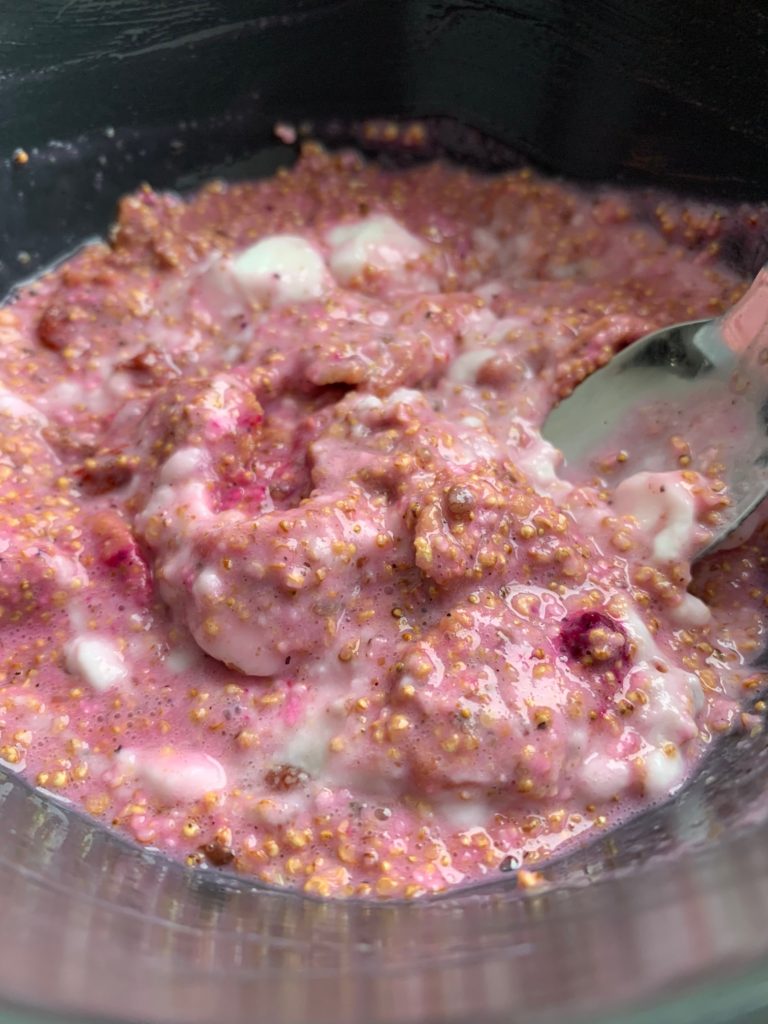
A little warning. I have been working on my biome for a long time. This bowl, though “healthy”, may make some people react or bloat. Start really slow by adding a tiny amount of one prebiotic powder to a smoothie or soup that you tolerate. This bowl should be something to aspire to one day when your gut can tolerate all types of prebiotic fibers.
I start with coconut yogurt for probiotics. I add puffed puffed amaranth (a prebiotic on its own) and a little bit of non-diary milk. I top it with a heaping tablespoon of tigernut butter. You can use tigernut flakes if you can’t tolerate grains and top with a tablespoon of sunflower seed butter.
Then I add a tablespoon of dragon fruit powder to support Akkermansia (my GI Map showed that I was low), some ground flax seeds, a scoop of sunfiber (PHGG) and a teaspoon of acacia fiber.
Sometimes I’ll add another teaspoon of green banana flour. It’s a lot of fiber but I slowly built up to this amount. If this makes you slightly gassy, it’s actually a good thing.
If you can’t tolerate grains, I have several grain-free, SIBO-safe porridge options in my Treats That Heal cookbooks. Top them with 1/4 teaspoon of partially hydrolyzed guar gum to start.
Also check out my 3 ingredient resistant starch cookie recipe here.
Soluble versus insoluble fiber
There are two kinds of fibers, soluble fiber and insoluble fiber. Soluble is gentler on the tummy and causes fewer reactions or side effects.
Soluble fiber dissolves in water, and includes plant pectin and gums, while insoluble fiber doesn’t dissolve in water and includes plant cellulose and hemicellulose. Soluble fiber is more likely to make people with SIBO and IBS react.
Each type of fiber has its own unique benefit.
Soluble fiber creates a gel that may help improve blood glucose control and blood cholesterol.
Insoluble fiber attracts water into the stool, making easier to pass with less strain.
Too much of either fiber can cause gas, pain, and abdominal bloating. But insoluble fiber tends to cause more issues.
Takeaways from this post
Prebiotics are as important if not MORE important than probiotics because they feed beneficial bacteria.
People with SIBO may react to prebiotics with lots of insoluble fiber. For them, PHHG (sun fiber) or tigernuts are the best choice.
Go slow when introducing fiber or any new prebiotic.
Don’t just kill, kill, kill the bad guys. Focus on building the biome too. It is just as important for gut health.
For more direction on how to incorporate more prebiotics in your diet, my cookbooks teaches show you how, with more than 60 gut-safe recipes.
 Angela Privin is proof that IBS is NOT an incurable disease or a disease at all. IBS is a body out of balance. It’s an invitation for change. After solving her own IBS mystery more than a decade ago Angela trained as a health coach to help others.
Angela Privin is proof that IBS is NOT an incurable disease or a disease at all. IBS is a body out of balance. It’s an invitation for change. After solving her own IBS mystery more than a decade ago Angela trained as a health coach to help others.
Angela uses both science and intuition to help people figure out what’s out of balance in their body. She works with lab tests, dietary changes, supplementation and nervous system rebalancing. Get help rebalancing your digestive system and solving your IBS mystery here.

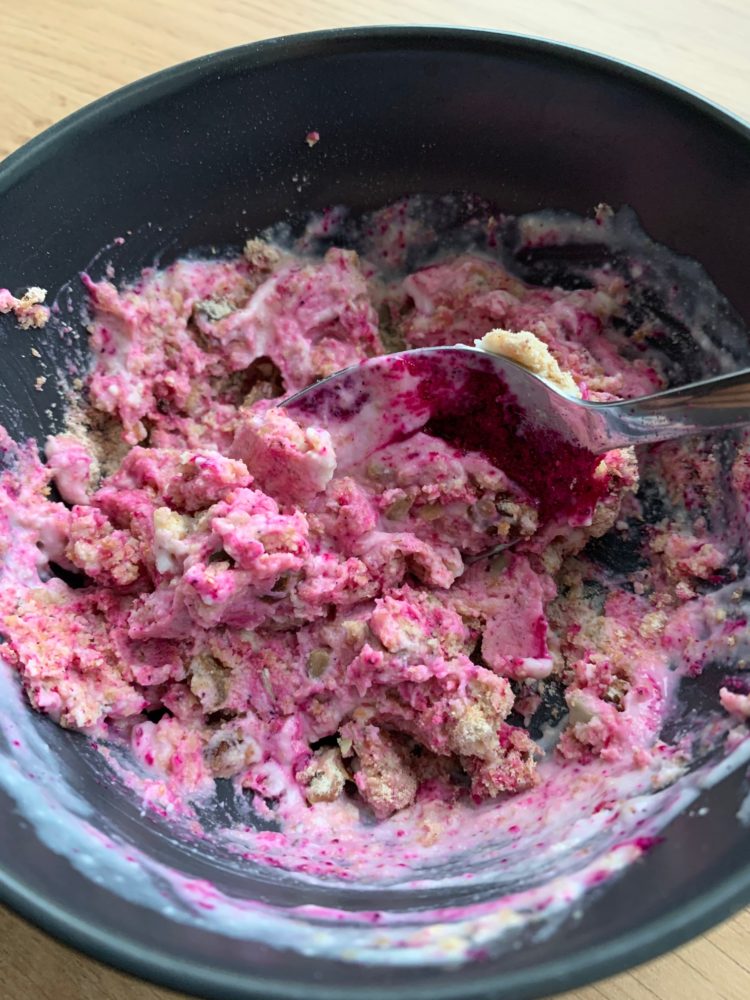


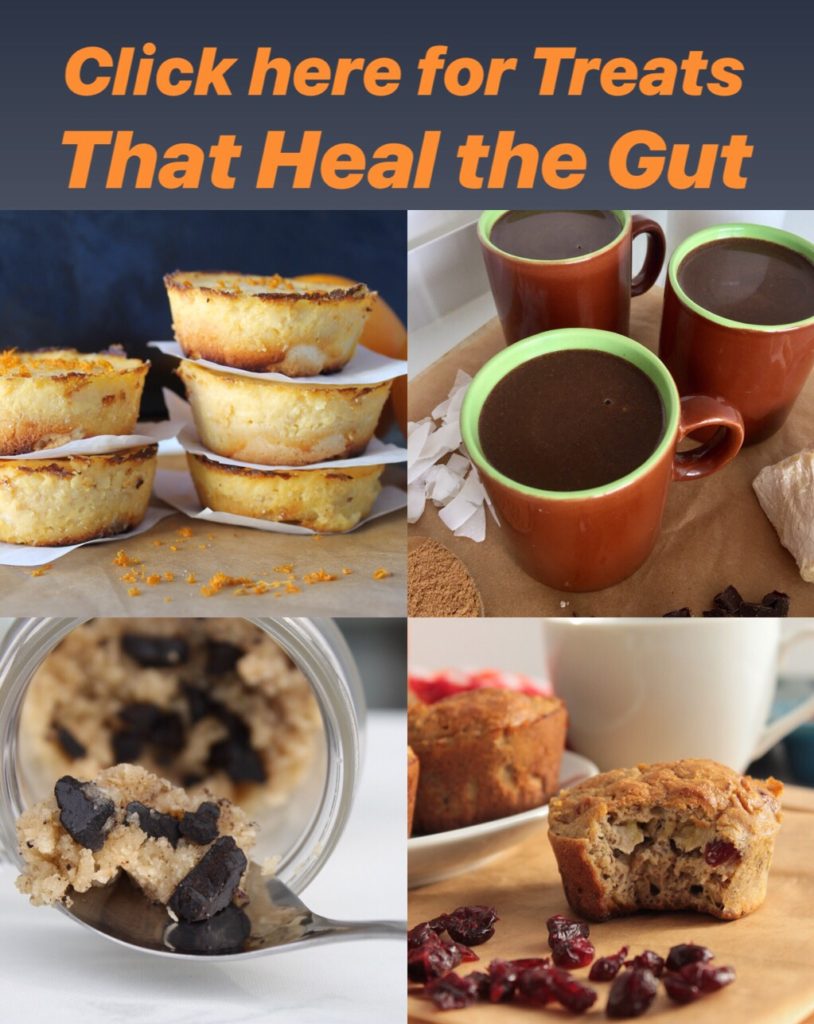


Pingback: How to bake gut-friendly cookies – Do It Yourself Health